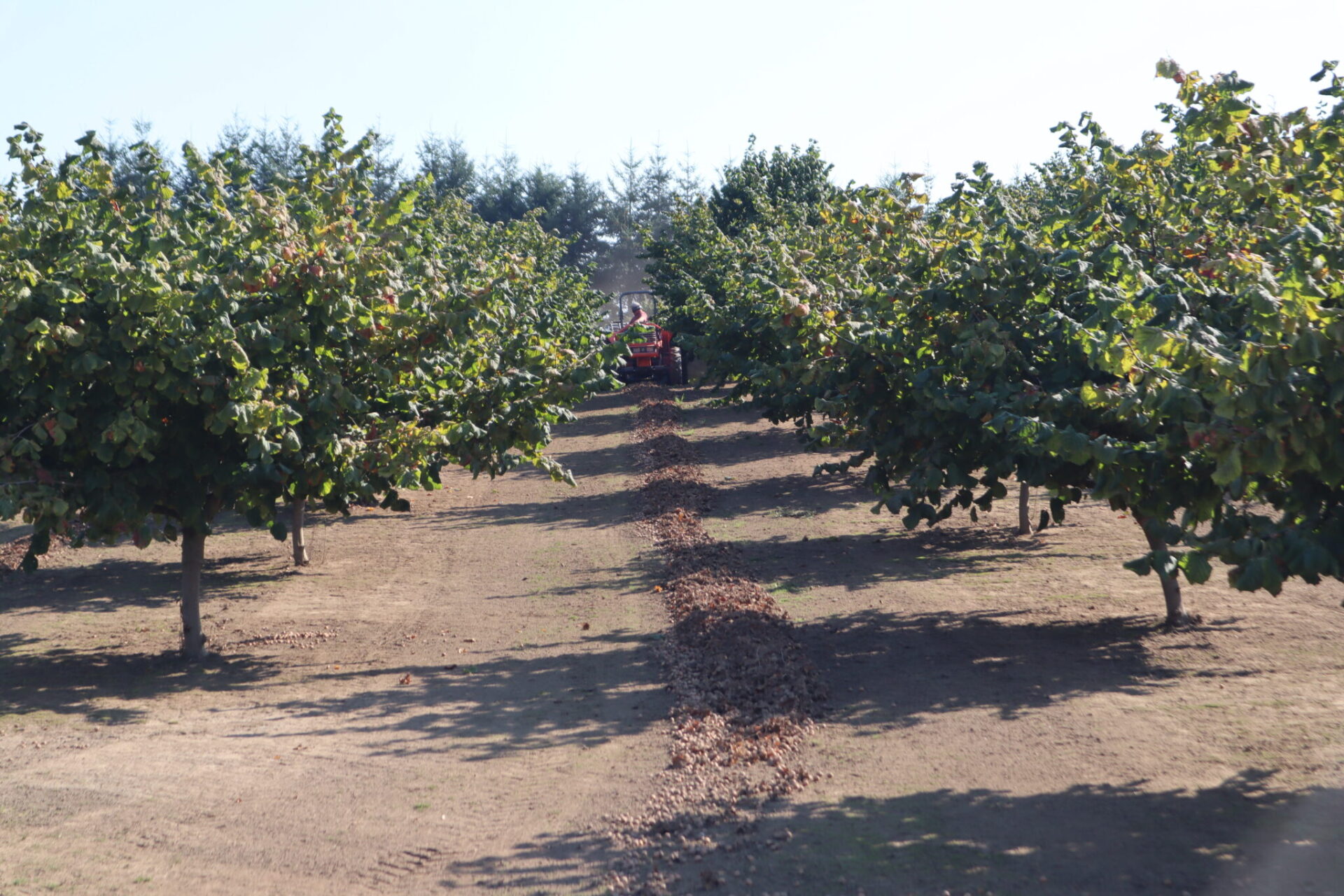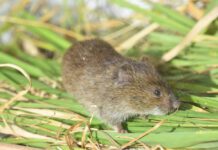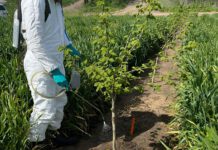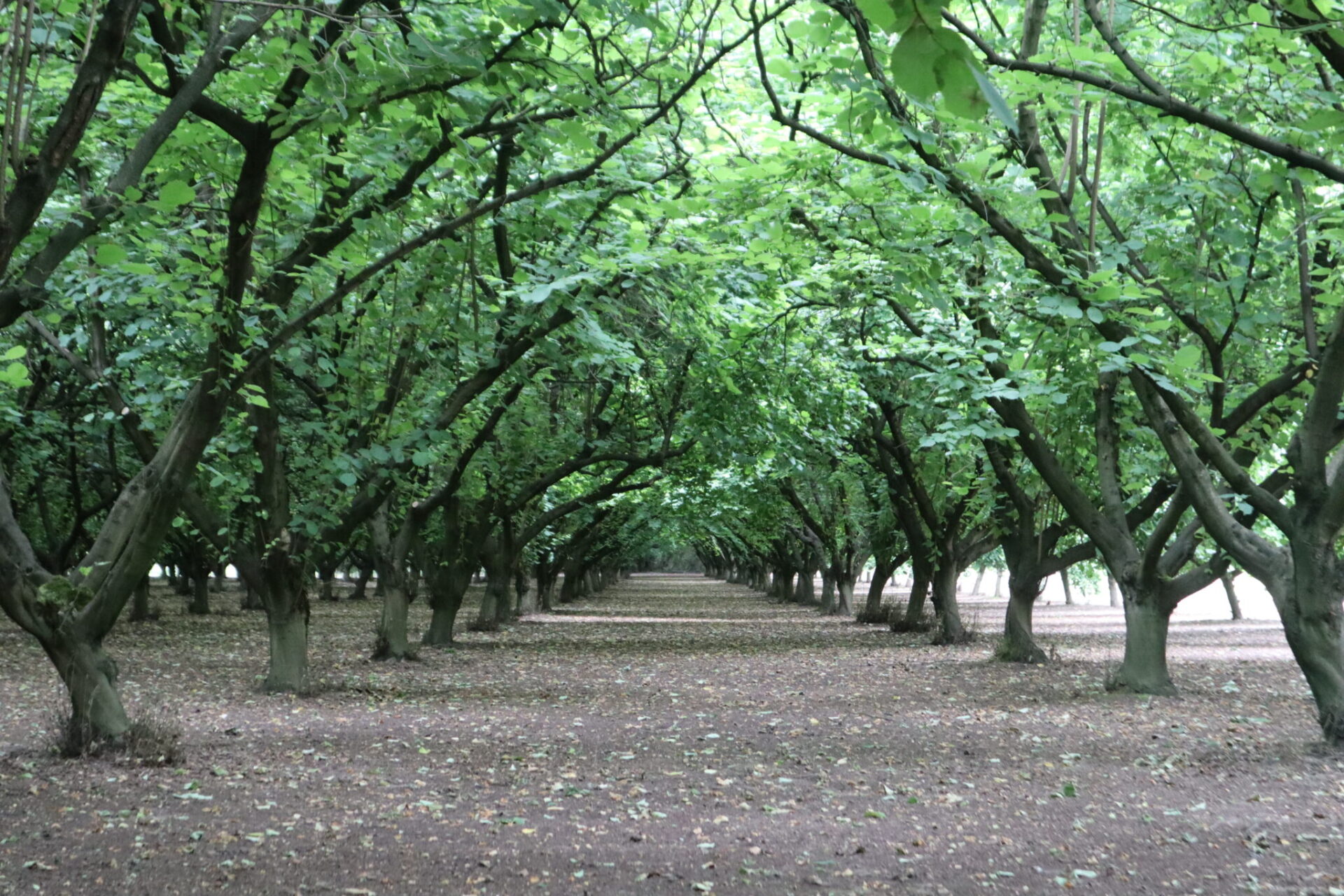
To the untrained eye, a hazelnut tree is a hazelnut tree; one orchard may look like thousands of its neighbors with the only difference being age. However, with nearly a dozen new varieties released in the last decade, hazelnut growers have an unprecedented number of viable options to consider as they expand or replant orchards.
The genesis of these new cultivars in Oregon traces back to the obscure pollinizer cultivar Gasaway, which was discovered to possess resistance to the fungal disease eastern filbert blight (EFB) back in the late 1960s. It has been used in controlled crosses since then in the hazelnut breeding program at Oregon State University. Since 2002, 15 new cultivars with resistance to EFB from Gasaway have been released, including seven main crop varieties and eight pollinizer selections.
EFB Resistant Varieties
Jefferson
The catalyst for the current boom in Oregon hazelnut plantings, Jefferson was the first variety widely released to growers in the Willamette Valley. Jefferson trees remain the most popular new variety and are lauded for their ease of maintenance. The trees tend to grow in the desired “champagne glass” style with branches growing skyward rather than spreading out.
Jefferson trees tend to be a later-harvesting variety with high yields. Jefferson trees produce some of the largest nuts and kernels, and they are a popular inshell variety.
Yamhill
Yamhill trees are some of the smallest statured yet highest yielding of the new varieties. They produce a small nut that is well-suited to industrial kernel uses, such as hazelnut paste. Yamhill trees are hearty and adaptable to nearly every growing condition. They are notorious for their shorter stature and tendency for branches to spread out and stay low to the ground rather than grow upward, meaning Yamhill trees require more pruning than Jefferson.
Yamhill trees are commonly processed as a kernel variety. Growers willing to put in the effort on maintenance can be handsomely rewarded with heavy harvests.
Wepster
Wepster trees are named for the Wepster family, longtime growers who have been very dedicated to helping the Oregon hazelnut community. Wepster trees are at the top of the list for vigor, kernel fiber and kernel percentage. These traits make them desirable in the expanding kernel marketplace; Wepster kernels are coveted for candy and confections.
Wepster trees are some of the first to harvest and relatively easy to manage with upright growth habits.
Dorris
Not yet as popular as some of their peers, Dorris trees exhibit some of the best features of all varieties. Where Dorris shines most is in the blanching of kernels; Dorris kernels blanch better, on average, than any other Oregon variety. Blanching, or the removal of the hazelnut skin during roasting, is a highly desirable trait in foodservice, confectionery and consumer markets.
This variety is named for the Dorris family and Dorris Ranch, the first commercial hazelnut farm in Oregon.
McDonald
One of the most recent releases to Oregon growers, McDonald trees are another variety named after a dedicated hazelnut family. They have already been planted in large numbers and are fast becoming a favorite of farmers.
Another kernel variety, McDonald produces very well and has the highest kernel percentage of the Oregon cultivars. McDonald trees are relatively easy to manage and prune. They are also very early to drop and harvest.
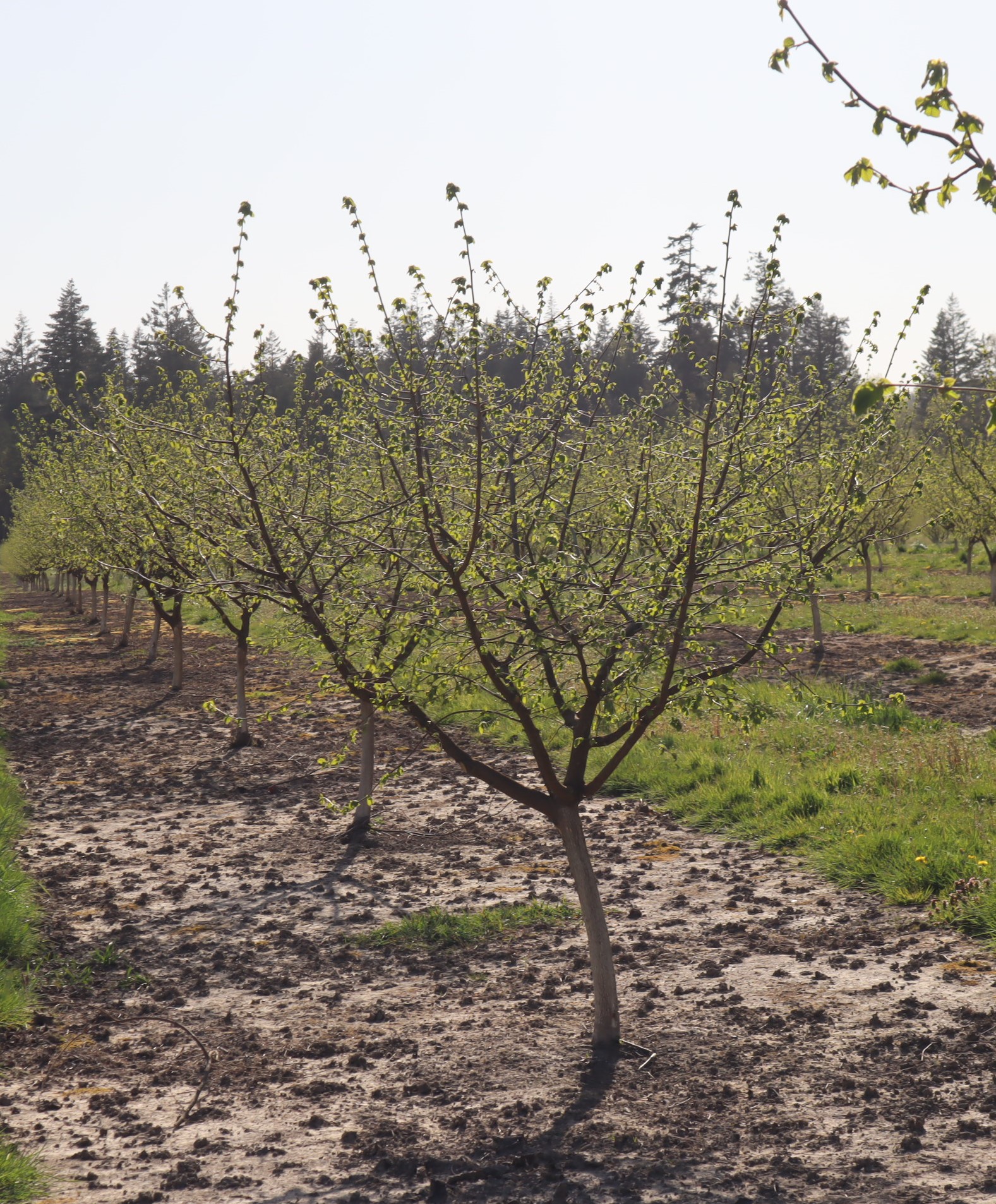
PollyO
The newest variety made available in the Willamette Valley, PollyO trees are named in honor of Polly Owen, the former director of the Hazelnut Industry Office who retired in 2021 after 25 years of service to the Oregon hazelnut industry. PollyO trees were first released on a broad scale in 2018, and harvest data is minimal at this stage. However, early feedback from growers indicates they are vigorous yet easily maintained trees with the potential for significant yields.
They were bred specifically to be a kernel variety that is popular with confectionaries, candy makers and food manufacturers seeking value-added products.

Pollinizer Varieties
Hazelnuts are not self-pollinating, which means orchards need several varieties of trees to produce nuts each year. While the following trees do produce a small amount of nuts, they are planted specifically as pollinizers.
Eta
Eta sheds pollen very late in the season and is a recommended pollinizer for Jefferson.
Felix
Felix is a general purpose late mid-season pollinizer that is compatible with most other cultivars.
Gamma
Gamma was released as a pollinizer for Barcelona but is a suitable early mid-season pollinizer for other cultivars, too.
Theta
Theta sheds pollen very late in the flowering season and is specifically well-suited for Jefferson, which has a very late female flower bloom period.
York
York is a mid-season pollinizer recommended for Dorris, McDonald, Wepster and PollyO. It is compatible with Jefferson and Yamhill, too, but is not ideal for either of those because of the time of pollen shed.
At least three different pollinizer varieties should be planted in each orchard.
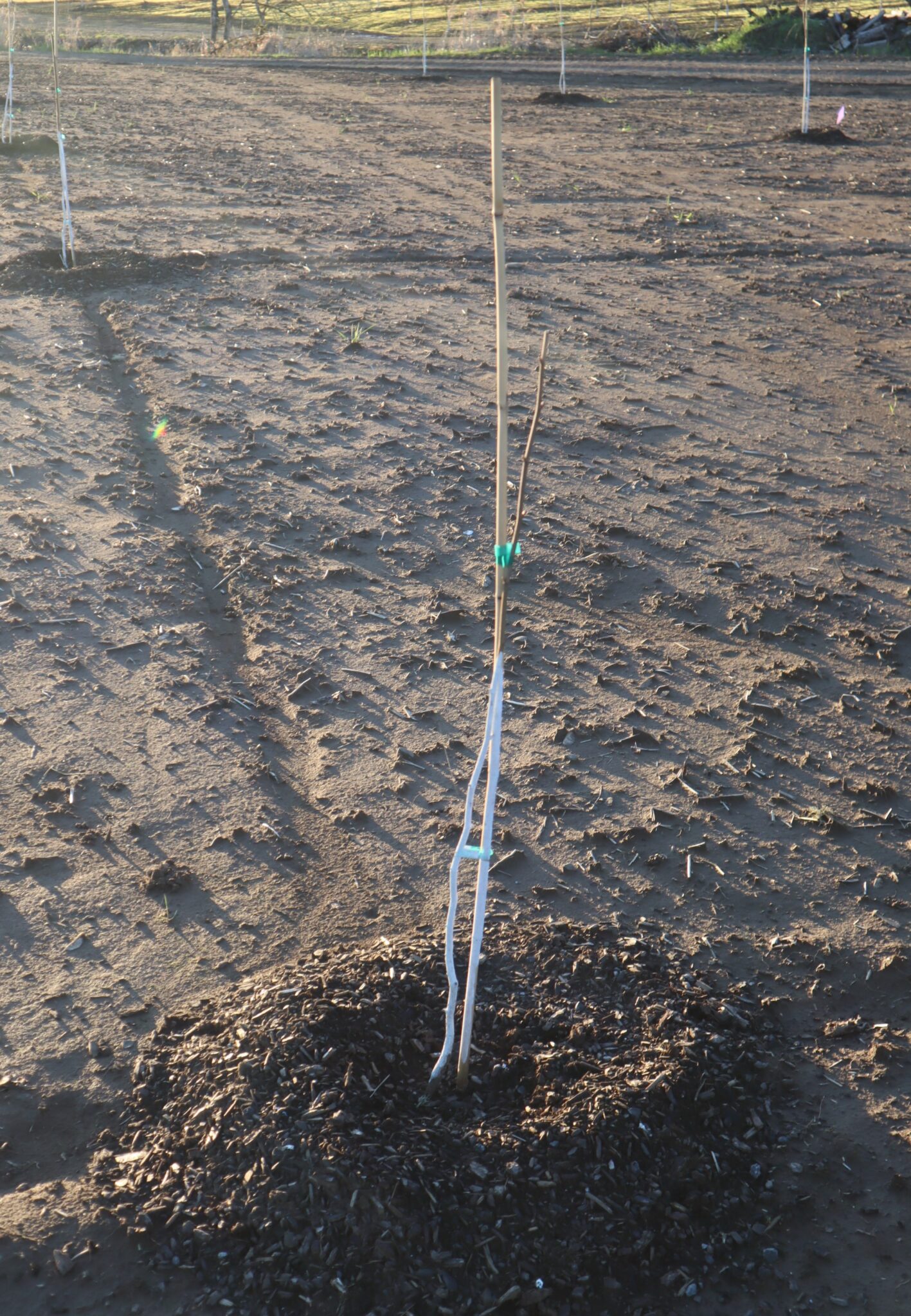
Non-Resistant Varieties
Barcelona
The standard for the industry that all other varieties are measured against, Barcelona trees once dominated the U.S. hazelnut landscape. However, like every other variety that predates the discovery of the Gasaway gene, Barcelona trees are susceptible to EFB, and their prominence has waned in years as blighted trees have been removed.
Even so, Barcelona trees are still estimated to be the most common hazelnut variety in Oregon. They harvest in early-to-mid October and feature an upright growth habit. They produce some of the largest nuts, making them the benchmark for the inshell market.
Ennis
Second in popularity to Barcelona amongst classic varieties, Ennis is one of the few varieties that can match, if not exceed, Barcelona in size. The trees are robust and high-yielding, and they produce a distinct, oblong-shaped nut.
Perhaps more than any other popular variety, Ennis trees were obliterated by EFB and their acreage has plummeted in recent years; nonetheless, growers with remaining healthy trees report strong yields.
Lewis, Clark and Sacajawea
These three varieties were bred at Oregon State University. All three varieties are somewhat resistant to EFB, with Sacajawea showing the most success in fending off the disease.
All three tend to produce smaller nuts yet are high yielding with tremendous quality. All three are harvested relatively early in the season.

Past Varieties
Many other hazelnuts varieties have come and gone from the Willamette Valley; most faded away due to their inability to handle EFB. Casina is still grown in small quantities, while others like Butler, Daviana, DuChilly, Gem, Hall’s Giant, J-5, Negret, Tonda di Giffoni, Tonda Romana and TGDL may only have a handful of trees still standing in the entire country.
